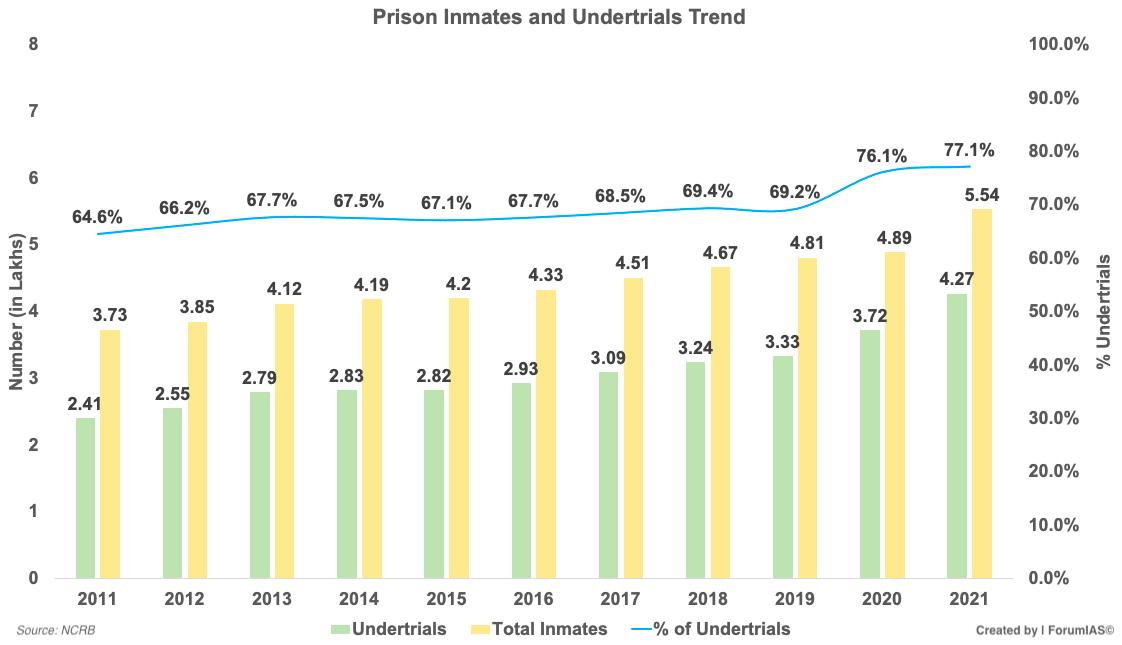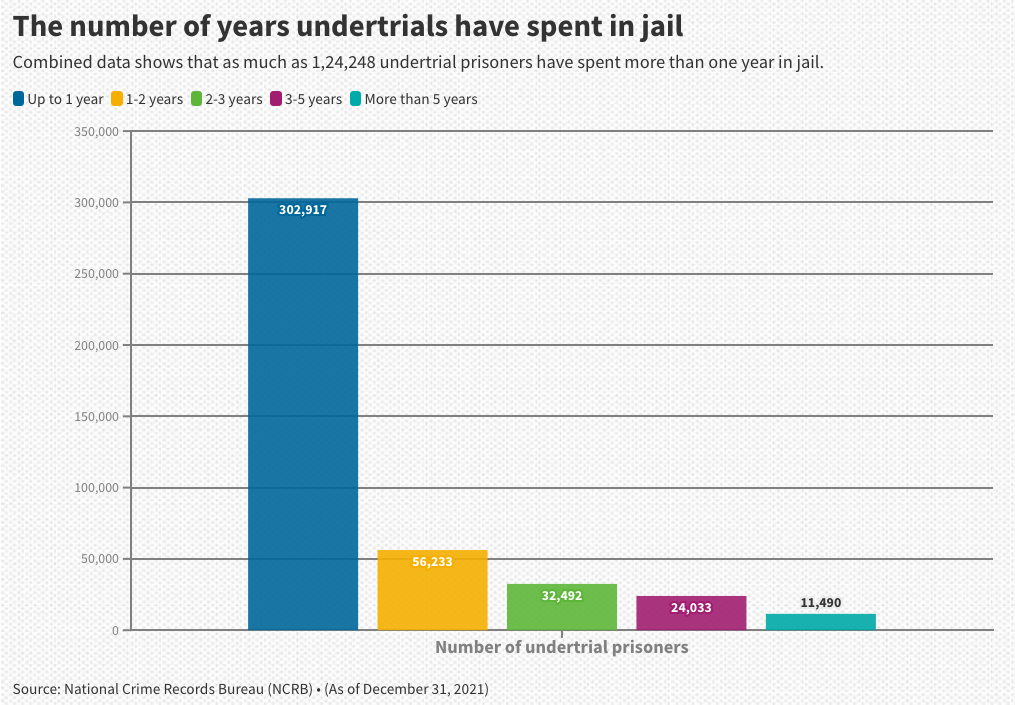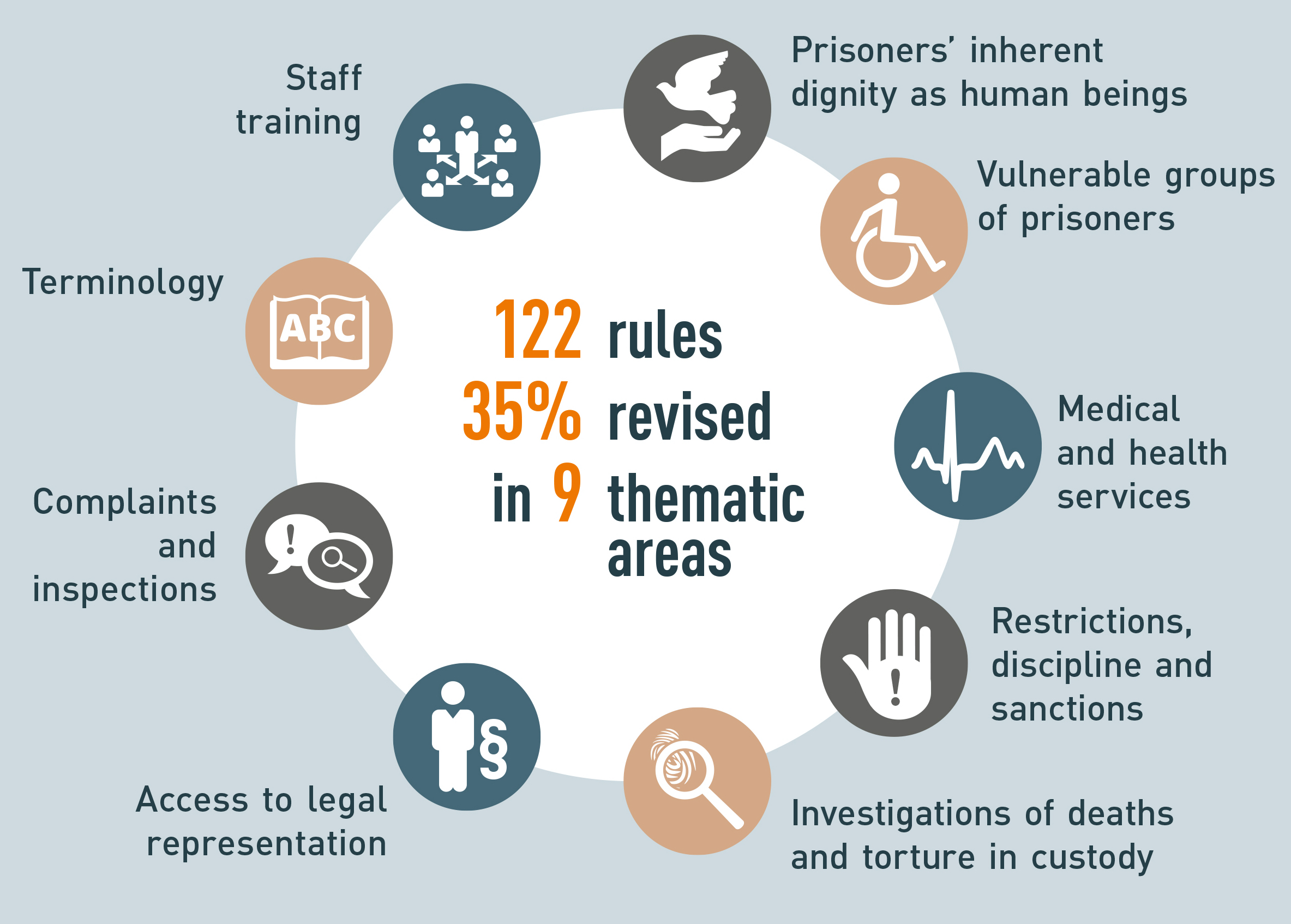ForumIAS announcing GS Foundation Program for UPSC CSE 2025-26 from 19 April. Click Here for more information.
ForumIAS Answer Writing Focus Group (AWFG) for Mains 2024 commencing from 24th June 2024. The Entrance Test for the program will be held on 28th April 2024 at 9 AM. To know more about the program visit: https://forumias.com/blog/awfg2024
Contents
| For 7PM Editorial Archives click HERE → |
Introduction
On the occasion of National Law Day (Constitution Day) on November 26, 2022, the President of India highlighted the plight of a large number of undertrials holed up in the prisons of India. The proportion of undertrials in prisons has reached a historical high figure of 77% in 2021 and the trend indicates that the number of undertrial prisoners has risen consistently over the last decade. Undertrial prisoners face considerable challenges and most of them belong to under-privileged communities. Multitude of reforms are required including in terms of procedures, implementation of existing provisions to address the issue.
What is the current status of Undertrials in India?
According to National Crime Record Bureau (NCRB), of the 554,034 prisoners, 427,165, or 77% were undertrials in 2021. There has been a 14.9% increase from 371,848 undertrials in 2020.
In 2021, 25.2% of prisoners were illiterate and 40.2% had not completed high school.
In 2019, Scheduled Castes made up 21% of under-trials and 21.7% of convicts (16.6% of the population (2011 Census)). Tribals made up 10.5% of all under-trials and 13.6% of all convicts (8.6% of the population (2011 Census)).
In 2021, 29.1% of undertrials had been in prison for more than a year.
Source: MoneyControl
District jails had the highest share of undertrials, accounting for 51.4% of the total, followed by the Central jails (36.2%) and Sub-jails (10.4%).
As of May 2022, over 4.7 crore cases are pending in Courts across different levels of the judiciary. Of them, 87.4% are pending in the subordinate courts.
Uttar Pradesh reported highest number of undertrials followed by Bihar and Maharashtra. The proportion of undertrials to the total number of prisoners was the highest in Bihar with 89.1%, followed by West Bengal (87.6%), and Odisha (87.3%).
The prison occupancy rate is 130.2%. Uttarakhand had the highest prison occupancy rate at 185%, followed by Uttar Pradesh (184.8%) and Sikkim (166.9%).
What safeguards are in place to protect the Undertrials?
Constitutional Safeguards
Article 21: “No person shall be deprived of his life or personal liberty except according to procedure established by law”.
Article 22: Undertrials have the right to consult and be defended by a legal practitioner of their choice (State of Madhya Pradesh vs. Shobharam (1966)).
Article 39A: The State is obligated to ensure that the functioning of the judicial system promotes justice and should provide free legal aid.
Legal Safeguards
Bail provisions have been defined in Criminal Procedure Code (CrPC) under sections 436-450. The first schedule of CrPC defines the bailable and non-bailable offences.
Section 436 of CrPC deals with provisions for bail in bailable offences and Section 437 deals with provisions for bails regarding non-bailable offences.
Section 436A states that when an person has (during investigation/trial under the CrPC for an offence other than for which punishment of death has been specified) undergone detention for a period extending up to one-half of the maximum period of imprisonment specified for that offence, the person shall be released by the Court on a personal bond.
Section 167 states that undertrial prisoners have the indefeasible right to be released on default bail (even for non-bailable offences), when their judicial custody exceeds 90/60 days, but no charge sheet has been filed by the police.
Supreme Court Judgments
The Supreme Court has said that unless a crime is devious and attracts a punishment of 7 years or more, no arrest should be made.
The SC in Bhim Singh v Union of India has sought effective implementation of Sec 436A.
In Rasiklal v Kishore (2009), the SC held right to bail for bailable offences is an absolute and indefeasible right. No discretion can be exercised in granting bail as under Section 436, bail is imperative and the person accused of an offence is bound to be released as soon as bail is furnished.
International Safeguards
The Universal Declaration of Human Rights (1948) recognises the presumption of innocence until proven guilty.
The United Nations Standard Minimum Rules for the Treatment of Prisoners (the Nelson Mandela Rules) clearly specify the standards of treatment with prisoners on trial.
What are the reasons for high number of Undertrials in India?
Low Capacity of Judicial System: India has 21 judges per million population, while the Law commission has recommended 50 per million. This along with lack of infrastructure results in large pendency of cases which now has reached over 4.5 crore cases.
Poor Economic and Education Levels: A large number of under trials are poor, illiterate, belonging to the marginalized communities. This along with lack of financial resources leads to inability to get legal aid and pay the bail amount.
Unnecessary Arrests and Issues of Bail System: Law Commission (268th Report) has highlighted that over 60% of arrests are unnecessary. The Commission report also highlighted that the rich and the affluent get bail with ease. However, poverty becomes the reason for incarceration of many prisoners, as they are unable to afford bail bonds or provide sureties.
| Read More: The Need for a Bail Law – Explained, pointwise |
Delay in Investigation: Investigation and trial process is often delayed by police and prosecution functionaries. This is due to poor ‘Police-Population’ Ratio. According to PRS, the sanctioned police strength was 181 police personnel per lakh persons in 2016, the actual strength was 137. The United Nations recommended standard is 222 police personnel per lakh persons.
What are the problems faced by Undertrials?
Prison Violence: Prisoners are vulnerable to violence. Group violence is also endemic and riots are common.
Criminalizing effect of Prison: There is absence of scientific classification methods to separate hardened criminals/convicts from young, first-time new criminals. Intermingling exposes circumstantial/young offenders to hardcore criminals making them vulnerable.
Health Problems: Overcrowding of prisons leads to shortage of adequate space to lodge prisoners in safe and healthy conditions.
Mental Health Issues: Long incarceration without conviction, especially when the undertrial eventually turns out to be innocent, leads to mental health issues. Moreover, there is lack of facilities to deal with mental health issues in prisons.
Drug Abuse: People booked under anti-drug laws constitute a substantial percentage of the prison population. Isolation inside prison leads to increased desperation to access banned substances. It also increases the danger of other prisoners being inducted into drug abuse.
Effect on the Families: Many prisoners are sole breadwinners for their families. Arrest and incarceration leads to loss of income and susceptible to poverty. Also, social stigmatization post release impact the ability to get employment. Often it leads to juvenile delinquency among suffering families.
Violation of Rights: The ‘Right to Speedy Trial‘ was recognized by the Supreme Court in Hussainara Khatoon vs. Home Secretary, State of Bihar (1979). Prolonged incarceration without bail violates the right. The ‘Right to Bail‘ is denied. Even in bailable offences, many prisoners continue to be in prisons due to exorbitantly high bail amount. ‘Right to Effective Legal Aid‘ is violated due to absence of adequate support.
What should be done to address the problem?
Prisoners: (a) Undertrials should be housed in open jails, where they can move around freely and earn a living, to reduce the punitive character of incarceration. They can be provided greater opportunity to communicate with families; (b) Undertrials should also be compensated, upon release/acquittal; (c) Steps should be taken for their rehabilitation after release, by providing them with self-employment skills, educational and vocational training etc.
| Read More: Right to Compensation (Against Wrongful Prosecution, Incarcerations, and Convictions) – Explained, pointwise |
Government: (a) A comprehensive Bail Law should be enacted to curb arbitrary arrests. There is a need to revamp outdated prison laws like the Prisons Act, that provide for penalties like fetters, solitary confinement etc. for prison offences, which have been held to be violative of the Constitution; (b) Police functions should be separated into investigation and law and order duties and sufficient strength should be provided to complete investigations on time and avoid delays; (c) To counter discrimination, prejudice and bias in the police, sensitisation programmes and workshops should be introduced; (d) The issue of judicial vacancies should be addressed on an urgent basis. The number of judges should be increased.
Judicial Processes: (a) Aid to Undertrials: Access to free legal aid shall be provided to under trials through NALSA by increasing its capacity and reach; (b) Automatic extension of remands should be stopped; (c) Video conferencing between jails and courts should be encouraged and tried in all states beginning with the big Central jails and then expanding to District and Sub-jails; (d) The practice of lower judiciary to grant adjournment of hearings on arbitrary grounds should be curbed. A big cause for pendency is arbitrary adjournments delaying court proceedings; (e) Computerization of Court procedures can help manage pendency.
Conclusion
Undertrials are overcrowding India’s prisons. Statutory provisions have been changed to reduce unnecessary arrests and to allow for bail/personal bonds. Several judgements have backed undertrials’ rights to a speedy trial and legal representation. However, undertrial population continues to expand. This mismatch is caused by poor enforcement of legislation and legal judgements in this area by the police, lower judiciary, and jail administration. Many experts are of the opinion that the issue can be addressed to a large extent by effective implementation of existing provisions. There is a need for greater political and judicial will to push through the procedural reforms.
Syllabus: GS II, Structure, organization and functioning of the Judiciary, Important aspects of governance, transparency and accountability.
Source: Indian Express, MoneyControl







